Summary Overview
HDPE Market Overview
The global HDPE (High-Density Polyethylene) market is steadily expanding, driven by demand from industries such as packaging, construction, automotive, and agricultural. This market covers a wide range of HDPE applications, including containers, pipelines, films, and sheets. Our paper includes a complete examination of procurement trends, emphasizing cost-cutting techniques and the implementation of new solutions to improve operational efficiency in HDPE manufacturing and distribution.
Key future difficulties for the HDPE market include controlling raw material costs, ensuring sustainable production techniques, resolving environmental concerns, and optimizing supply chain logistics. The use of sophisticated manufacturing technology and smart sourcing methods is critical for increasing HDPE output and preserving long-term competitiveness. As worldwide demand for HDPE grows, businesses are using market information to improve operational performance, decrease waste, and mitigate the risks associated with supply chain interruptions.
Market Size: The global HDPE market is projected to reach USD 118 billion by 2035, growing at a CAGR of approximately 4.85% from 2025 to 2035.
Growth Rate: 4.85% 
-
Sector Contributions: Growth in the market is driven by:
-
Manufacturing and Supply Chain Optimization: Real-time data integration and increased process efficiency are critical for streamlining production and distribution, ensuring timely delivery and reducing costs.
-
Packaging and Construction Growth: The versatility of HDPE in packaging, including bottles, containers, and films, as well as its durability in construction applications, continue to drive growth. -
Technological Transformation: Predictive analytics, streamlined production schedules, and manufacturing automation are revolutionizing the production and distribution of HDPE goods. -
Innovations: Eco-friendly manufacturing technologies and the development of recyclable HDPE materials are allowing businesses to fulfil rising sustainability standards while lowering costs and complexity. -
Investment Initiatives: Businesses are progressively investing in automation and modern manufacturing technology to increase production efficiency, lower costs, and fulfill rising global demand for HDPE.
-
Regional Insights: Asia Pacific and North America remain significant regions for HDPE production and consumption. These regions benefit from a strong manufacturing base and rising demand for packaging and construction materials.
Key Trends and Sustainability Outlook
-
Sustainability Focus: The emergence of circular economy models promotes HDPE recycling and reuse, resulting in more sustainable packaging and construction techniques.
-
Advanced Features: The incorporation of smart manufacturing technologies such as AI and IoT into HDPE production improves efficiency and product quality. -
Customization and Diversification: Companies are focusing on providing HDPE solutions for specialized industries, including as agricultural, food packaging, and automotive. -
Data-Driven Insights: Advanced analytics in HDPE manufacturing systems help firms estimate demand, optimize inventory management, and measure performance metrics.
Growth Drivers
-
Digital Transformation: Predictive machine learning and analytics are being used to improve production processes, save energy, and reduce waste. -
Global Infrastructure Expansion: Ongoing infrastructure development projects, particularly in emerging nations, are driving demand for HDPE pipes, sheets, and other long-lasting materials used in construction and agriculture. -
Regulatory Compliance: As rules surrounding sustainability and waste management become more stringent, organizations are turning to HDPE as a compliant material due to its recyclability and low environmental effect. -
Global Demand Surge: The expanding global population and urbanization are pushing up demand for HDPE materials across a variety of industries. This includes food and beverage packaging, as well as materials used in construction endeavours -
Cost Optimization and Efficiency: The continued drive for operational efficiency in HDPE manufacturing, including automation and process optimization, is lowering production costs and making HDPE products more competitive in the market.
Overview of Market Intelligence Services for the HDPE Market
Recent research has found many main issues in the HDPE industry, including growing raw material costs and the need for more sustainable manufacturing processes. Market intelligence studies give valuable information on procurement prospects, allowing businesses to identify cost-cutting methods, optimize supplier relationships, and improve production efficiency. These insights also aid in environmental compliance, product quality maintenance, and cost management throughout the manufacturing process.
Procurement Intelligence for HDPE: Category Management and Strategic Sourcing
Companies are refining their procurement strategies to remain competitive in the HDPE market by implementing effective supply chain management and tracking raw material supplier performance. Strategic sourcing and category management are critical for lowering material costs while maintaining a consistent supply of high-quality HDPE products. Businesses that use actionable market knowledge can improve their procurement strategies, negotiate better terms with suppliers, and secure extended, cost-effective access to the raw materials required for HDPE manufacturing.
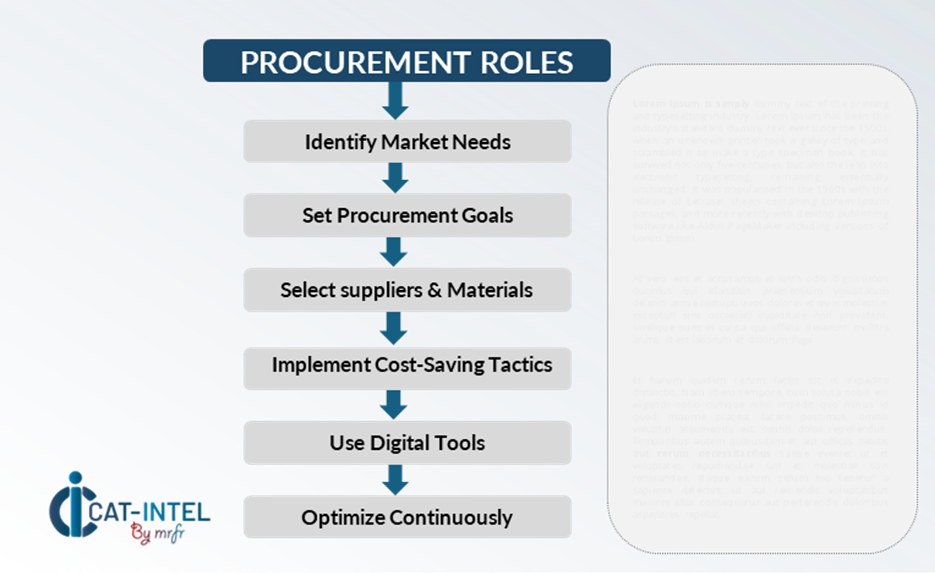
Pricing Outlook for HDPE: Spend Analysis
The pricing prognosis for the HDPE market is likely to be moderately dynamic, with swings affected by several important factors. These include technological developments, changes in raw material costs, increased demand for environmentally friendly and recyclable HDPE goods, and regional market variances. Furthermore, the growing emphasis on ecologically friendly methods, along with changes in supply chain dynamics, there is an upward pressure on HDPE material pricing.
Graph shows general upward trend pricing for HDPE and growing demand. However, there may be fluctuations influenced by economic conditions, technological advancements, and competitive dynamic.
Streamlining procurement through improved supplier management, real-time data monitoring, and strategic sourcing will assist to minimize HDPE material costs and improve supply chain efficiency. Utilizing market data and analytics technologies can help firms estimate price patterns and discover cost-cutting possibilities, particularly during moments of price volatility.
Partnering with reputable HDPE suppliers and negotiating attractive multi-year contracts can give pricing consistency while mitigating the risk of unexpected cost rises. Focused investments in sustainable and energy-efficient production methods can help lower manufacturing costs over time while also meeting environmental requirements and market demand for eco-friendly products.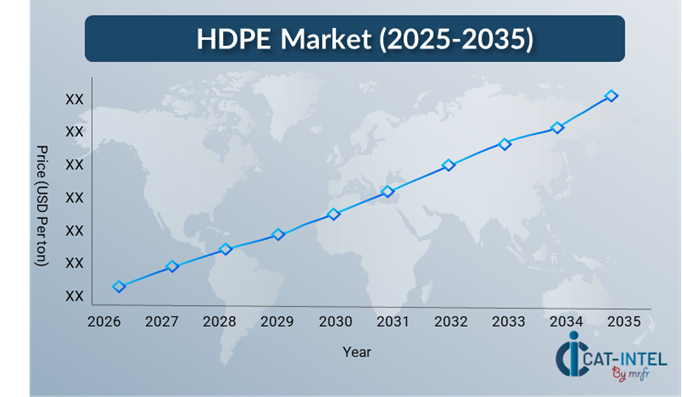
Cost Breakdown for HDPE: Total Cost of Ownership (TCO) and Cost-Saving Opportunities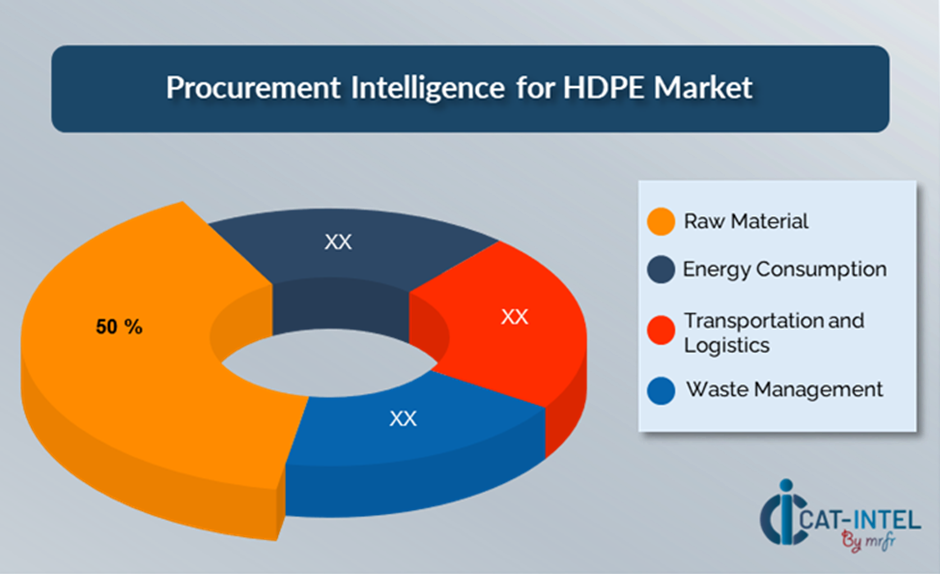
- Raw Material: (50%)
-
Description: Raw material expenses account for most HDPE production costs, including the cost of ethylene (the monomer used to generate HDPE) and the polymerization process.
-
Trends: Developments in polymerization technology are increasing the efficiency of HDPE manufacturing, potentially lowering prices and increasing yield.
-
Energy Consumption: (XX%) - Transportation and Logistics: (XX%)
- Waste Management: (XX%)
Cost-Saving Opportunities: Negotiation Levers and Purchasing Negotiation Strategies
Long-term collaborations with reputable HDPE suppliers, particularly those who provide sustainable and recyclable materials, can assist gain better pricing structures and attractive terms, such as bulk purchasing discounts and bundled services. Multi-year contracts and volume-based agreements allow you to lock in pricing, reduce the impact of price rises, and guarantee a consistent supply of high-quality products over time. Bulk purchases and consistent order volumes may qualify for discounts.
Exploring subscription-based models or volume-based arrangements can assist obtain cheaper rates while mitigating the impact of pricing swings, assuring long-term cost stability. Partnering with suppliers who promote innovation in sustainable production processes, such as eco-friendly HDPE materials or energy-efficient manufacturing technology, can save long-term operational costs while also meeting expanding regulatory standards.
Supply and Demand Overview for HDPE: Demand-Supply Dynamics and Buyer Intelligence for Effective Supplier Relationship Management (SRM)
The HDPE (High-Density Polyethylene) market is also enjoying steady expansion, driven by increased demand across industries such as packaging, construction, automotive, and agricultural. The supply and demand dynamics within the HDPE market are affected by factors like technological improvements in production, regulatory requirements, and global economic situations.
Demand Factors:
-
Sustainable Packaging Trends: The increasing need for eco-friendly packaging alternatives is driving the market for HDPE materials, which are both recyclable and cost-effective for making packaging, bottles, and containers. -
Infrastructure Development: The growing number of global infrastructure projects, such as water and gas pipelines, is raising demand for HDPE pipes and fittings because to its durability and resistance to corrosion. -
Customization and Regulatory Needs: Businesses including construction, healthcare, and agriculture need HDPE solutions adapted to their individual needs. Whether for strong containers, piping systems, or agricultural films. -
Industry- Specific Requirements: Companies are looking for HDPE solutions that can easily integrate with supply chain activities like shipping and packaging, hence enhancing efficiency and product delivery.
Supply Factors:
-
Technological Advancements: Modern extrusion and injection moulding methods are increasing production efficiency, cutting prices, and boosting the quality of HDPE products. -
Supplier Ecosystem: The HDPE market is aided by an increasing number of manufacturers and suppliers, providing organizations with a variety of pricing, quality, and customisation options. -
Global Economic Factors: Changes in the global economy, such as raw material pricing, energy costs, and supply chain disruptions, affect the cost and availability of HDPE. -
Scalability and Flexibility: Suppliers provide scalable solutions for both small-scale producers and large businesses, while adaptable manufacturing capabilities allow them to meet individual customer requests
Regional Demand-Supply Outlook: HDPE
The Image shows growing demand for HDPE in both Asia Pacific and North America, with potential price increases and increased Competition.
Asia Pacific: Dominance in the HDPE Market
Asia Pacific, particularly East Asia, is a dominant force in the global HDPE market due to several key factors:
-
Strong Manufacturing and Industrial Base: Asia-Pacific countries are key HDPE producers and consumers, driving demand in industries including packaging, construction, automotive, and consumer products. -
Urbanization and Infrastructure Development: Rapid urbanization and enormous scale infrastructure projects throughout the area, particularly in developing countries, are driving demand for HDPE materials. -
Cost Competitiveness: The region has reduced labour and production costs, resulting in affordable prices in the global HDPE market. -
Technological Developments: Asia-Pacific leads the way in technological developments in HDPE production, with major chemical corporations investing extensively in R&D. -
Expanding Consumer Market: The Asia-Pacific region's vast and growing middle class drives consumption, boosting HDPE demand in packaging, appliances, and other consumer goods.
Asia Pacific Remains a key hub HDPE Price Drivers Innovation and Growth.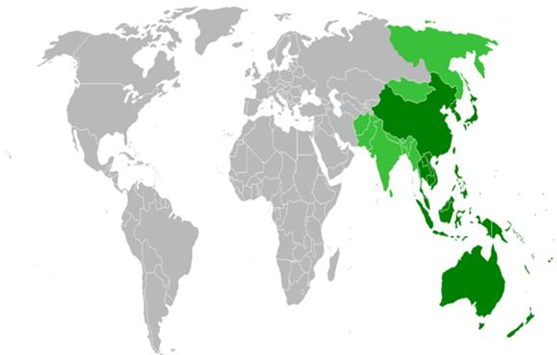
Supplier Landscape: Supplier Negotiations and Strategies
The HDPE (High-Density Polyethylene) market's supplier landscape is both diversified and competitive, with a mix of global and regional vendors influencing market dynamics. The market is controlled by well-known global manufacturers, but smaller, specialized suppliers are emerging that focus on specific applications, environmental impact, and novel manufacturing techniques. Large-scale HDPE producers have vast product portfolios that serve a variety of industries, including packaging, construction, automotive, and agricultural. Smaller or regional suppliers concentrate on specialized industrial needs, such as eco-friendly and recyclable HDPE solutions or tailored goods for areas like food packaging, healthcare and construction.
As environmental rules and sustainability become increasingly important, HDPE providers are investing in sustainable production procedures. Innovative HDPE products that are biodegradable or recyclable, as well as energy-efficient manufacturing technology, are receiving attention. The supplier ecology differs by geography, with some areas seeing an increase in local players catering to unique geographic demands or conforming to regional sustainability norms. Local suppliers may provide advantages such as lower shipping costs, faster lead times, and a more specialized approach to regulatory compliance. As the need for industry-specific HDPE products grows, suppliers are giving customized choices in terms of product requirements, packaging, and performance attributes to meet the needs of each sector.
Key Suppliers in the HDPE Market Include
- LG Chem
- ExxonMobil Chemical
- Chevron Phillips Chemical
- LyondellBasell Industries
- SABIC (Saudi Basic Industries Corporation)
- INEOS Group
- Braskem
- Reliance Industries
- Borealis AG
- Dow Chemical Company
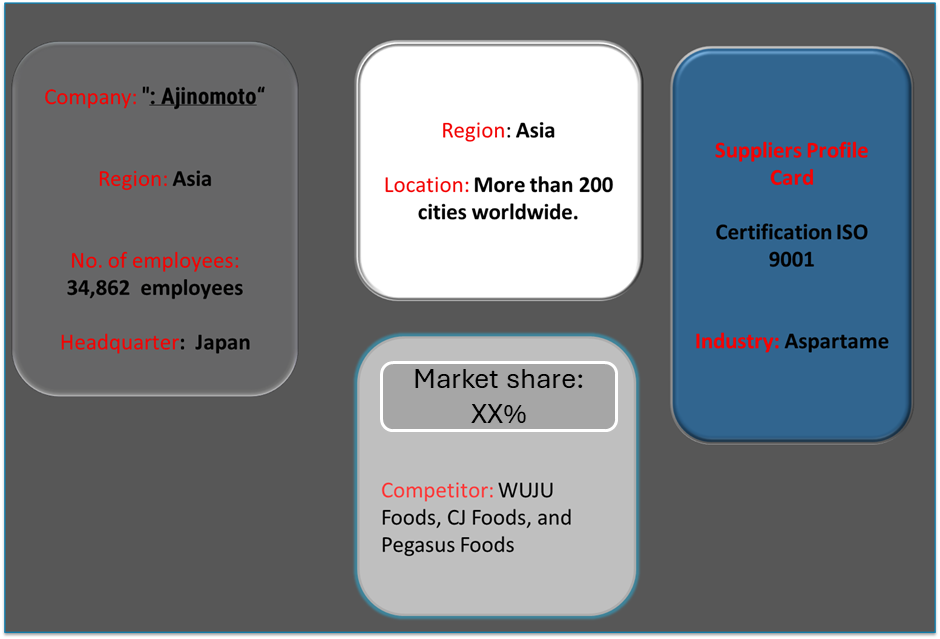
Key Developments Procurement Category Significant Development
Significant Development |
Description |
Market Growth |
Businesses are increasingly turning to HDPE products for their durability, recyclability, and cost-effectiveness, particularly in emerging regions where infrastructure development and packaging requirements are on the rise. |
Cloud Adoption |
The demand for sustainable packaging and construction materials is driving an increasing trend toward eco-friendly HDPE products. As companies prioritize sustainability, the need for recycled HDPE and environmentally friendly production methods is likely to increase. |
Product Innovation |
Innovations such as biodegradable HDPE products, enhanced extrusion techniques, and new types of lightweight HDPE materials are driving market expansion. These developments enable firms to develop more efficient and environmentally friendly packaging, infrastructure, and other applications. |
Technological Advancements |
Automation, AI-based quality control, and improved extrusion processes are all helping to improve HDPE manufacturing efficiency, quality, and scalability. to fulfill the increasing demand for HDPE while being cost-effective and eliminating waste. |
Global Trade Dynamics |
These considerations are influencing global organizations' procurement strategy, with a greater emphasis on buying HDPE products from vendors. Trade dynamics and regional policies continue to influence how HDPE materials are sourced and used throughout global markets. |
Customization Trends |
The need for bespoke HDPE solutions is increasing as businesses look for materials that are specially fitted to their operational requirements. Businesses need modular HDPE solutions that may be incorporated into unique systems or customized for specific use cases, such as specialized food packaging or specialized pipes for industrial use. |
|
HDPE Attribute/Metric |
Details |
Market Sizing |
The global HDPE market is projected to reach USD 118 billion by 2035, growing at a CAGR of approximately 4.85% from 2025 to 2035. |
HDPE Technology Adoption Rate |
Approximately 60% of companies in the HDPE industry have adopted cutting-edge technology to improve production processes, with an increasing emphasis on automated extrusion lines, AI-driven quality control systems, and smart logistics solutions to improve operational efficiency and scalability.
|
Top HDPE Industry Strategies for 2025 |
Companies are implementing circular economy principles to decrease waste and improve material recycling. Robotic process automation (RPA) and AI-based monitoring systems are increasingly being used in industries such as extrusion and moulding to improve precision and cost-effectiveness.
|
HDPE Process Automation |
Approximately 55% of HDPE producers are automating critical production operations including as inventory management, quality checks, and compliance reporting to eliminate human error, increase efficiency, and meet environmental and safety standards.
|
HDPE Process Challenges |
Transitioning to more modern HDPE means of production, such as sustainable manufacturing and automation, demands a significant initial investment. Meeting ecological requirements, such as rising demand for biodegradable and recyclable HDPE goods, remains a significant problem.
|
Key Suppliers |
Major international firms such LG Chem, ExxonMobil Chemical and Chevron Phillips Chemical, as provide high-quality HDPE resin and are among the market's leading suppliers. |
Key Regions Covered |
Asia-Pacific and North America are key markets for HDPE adoption, with strong demand in the packaging, construction, and agriculture industries. |
Market Drivers and Trends |
IoT for production monitoring and AI-driven quality control are increasing productivity and product consistency in the HDPE industry. As HDPE producers shift to more efficient and scalable manufacturing techniques, the cost per unit of production is predicted to fall, making HDPE more affordable and available for diverse industries.
|

